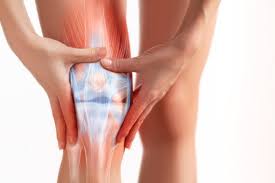
Breaking News
 Tennessee Sues Roblox, Says Game is a 'Gateway for Predators' Targeting Children
Tennessee Sues Roblox, Says Game is a 'Gateway for Predators' Targeting Children
 Kushner and Witkoff Reportedly Draft $112B Plan to Turn Gaza Into 'Smart City'...
Kushner and Witkoff Reportedly Draft $112B Plan to Turn Gaza Into 'Smart City'...
 Christmas in Venezuela: What It Was Like After Socialism Destroyed the Country
Christmas in Venezuela: What It Was Like After Socialism Destroyed the Country
 Can AI Build Your Home? | From #460 Ryan Fink & Ty Frackiewicz | The Way I Heard It
Can AI Build Your Home? | From #460 Ryan Fink & Ty Frackiewicz | The Way I Heard It
Top Tech News
 Perfect Aircrete, Kitchen Ingredients.
Perfect Aircrete, Kitchen Ingredients.
 Futuristic pixel-raising display lets you feel what's onscreen
Futuristic pixel-raising display lets you feel what's onscreen
 Cutting-Edge Facility Generates Pure Water and Hydrogen Fuel from Seawater for Mere Pennies
Cutting-Edge Facility Generates Pure Water and Hydrogen Fuel from Seawater for Mere Pennies
 This tiny dev board is packed with features for ambitious makers
This tiny dev board is packed with features for ambitious makers
 Scientists Discover Gel to Regrow Tooth Enamel
Scientists Discover Gel to Regrow Tooth Enamel
 Vitamin C and Dandelion Root Killing Cancer Cells -- as Former CDC Director Calls for COVID-19...
Vitamin C and Dandelion Root Killing Cancer Cells -- as Former CDC Director Calls for COVID-19...
 Galactic Brain: US firm plans space-based data centers, power grid to challenge China
Galactic Brain: US firm plans space-based data centers, power grid to challenge China
 A microbial cleanup for glyphosate just earned a patent. Here's why that matters
A microbial cleanup for glyphosate just earned a patent. Here's why that matters
 Japan Breaks Internet Speed Record with 5 Million Times Faster Data Transfer
Japan Breaks Internet Speed Record with 5 Million Times Faster Data Transfer
Discovery of 'Tendon Stem Cells' Could Revolutionize How We Recover From Injuries

Debilitating tendon injuries may soon be a thing of the past now that researchers have discovered the existence of "tendon stem cells" for the first time.
The buildup of scar tissue makes recovery from torn rotator cuffs, jumper's knee, and other tendon injuries a painful, challenging process, often leading to secondary tendon ruptures.
New research led by Carnegie's Chen-Ming Fan and published in Nature Cell Biology reveals the existence of tendon stem cells that could potentially be harnessed to improve tendon healing and even to avoid surgery.
"Tendons are connective tissue that tether our muscles to our bones," Fan explained. "They improve our stability and facilitate the transfer of force that allows us to move. But they are also particularly susceptible to injury and damage."
Unfortunately, once tendons are injured, they rarely fully recover, which can result in limited mobility and require long-term pain management or even surgery. The culprit is fibrous scars, which disrupt the tissue structure of the tendon.
Working with Carnegie's Tyler Harvey and Sara Flamenco, Fan revealed all of the cell types present in the Patellar tendon, found below the kneecap, including previously undefined tendon stem cells.

 Advanced Propulsion Resources Part 1 of 2
Advanced Propulsion Resources Part 1 of 2

